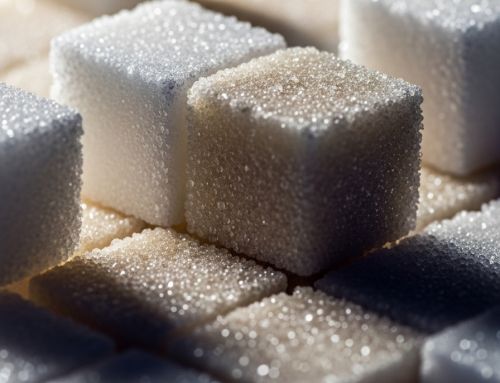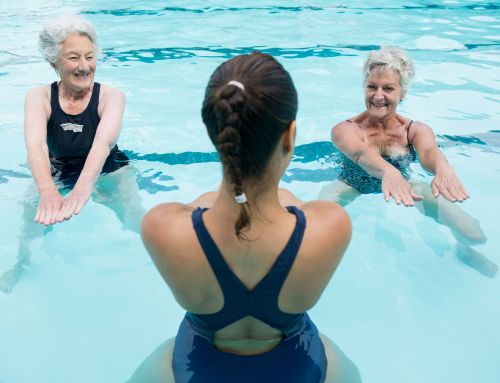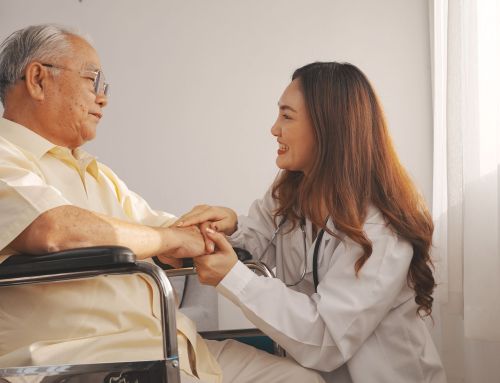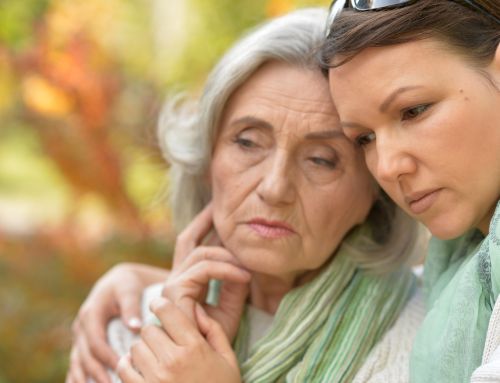Fall prevention is crucial for seniors, especially as the autumn brings challenges like cooler temperatures, shorter days, and slippery outdoor conditions like wet leaves or early frost, which increase the risk of falls.
For seniors, a fall can result in serious injury or even a loss of independence. In this guide, we go beyond basic tips, offering comprehensive strategies to help safeguard your loved one from fall-related risks during the autumn months, with practical advice that promotes safety and senior well-being.
Understanding Fall Risks in Seniors
As people age, the risk of falling increases due to a combination of physical, environmental, and medical factors. Understanding the risks that contribute to falls is the first step toward prevention.
Physical Factors
- Muscle Weakness: Aging naturally results in a loss of muscle strength, particularly in the lower body. Weaker leg muscles make it difficult for seniors to maintain balance, increasing the likelihood of falling, especially on uneven or slippery surfaces like wet leaves.
- Poor Balance and Coordination: Age-related changes in balance and coordination can make simple tasks like walking or standing unstable. Medical conditions such as arthritis, Parkinson’s disease, or stroke can exacerbate these issues.
- Impaired Vision: Seniors require 2-4 times as much light to see clearly than someone in their 20s. The shorter days of fall can contribute to accidents due to decreased visibility.
- Slower Reaction Time: Reflexes slow with age, making it harder for seniors to correct a stumble or avoid obstacles. Combined with other physical limitations, this can turn minor missteps into major falls.
Environmental Factors
- Slippery Leaves and Frost: Autumn brings unique outdoor hazards like wet, fallen leaves and early frost, which create slippery surfaces. Uneven or unmaintained sidewalks further increase the risk.
- Decreased Daylight: Shorter days and dim lighting, especially in the mornings and evenings, can lead to missteps or difficulties navigating stairs or uneven ground, increasing the risk of falls.
- Home Hazards: Cluttered walkways, poor lighting indoors, and loose rugs also pose a significant threat, especially when transitioning between indoor and outdoor spaces in the cooler months.
Medical Factors
- Side Effects From Medications: Many seniors take medications for chronic conditions, which can lead to side effects such as dizziness, drowsiness, or balance issues. Medications like blood pressure regulators, antidepressants, and sedatives can further increase the risk of falls.
- Cognitive Decline: Conditions like dementia or Alzheimer’s disease can result in confusion or poor judgment, making it harder for seniors to recognize and avoid hazards. This cognitive impairment, combined with physical frailty, further increases the risk of falling. For more in-depth strategies on managing dementia at home, check out our blog post on supporting a parent with dementia.
- Chronic Health Conditions: Neurologic conditions such as Parkinson’s disease, diabetes, heart failure, or kidney failure put people in a vulnerable state for falls. Even short stays in the hospital can severely decondition a patient and leave them weakened.
By recognizing and addressing these risk factors early, families can implement targeted fall prevention strategies to maintain safety and independence throughout the fall season.
Strategies for Preventing Falls
1. Strengthening the Body for Stability
Physical resilience is key to reducing fall risks. Regular exercises that focus on strength, balance, and flexibility can improve stability and help seniors maintain independence.
✔️ Strength Training
Exercises can range from simple chair exercises to resistance training using bands and weights. Resistance training can be started at any age and is the only way to build muscle size. Seniors can improve their balance by strengthening key muscles, particularly in the legs and core, to reduce the risk of injury and recover from injury faster.
✔️ Balance and Flexibility
Activities like tai chi and yoga can enhance stability and flexibility, reducing stiffness and improving mobility.
2. Securing the Living Environment
A safe home outdoor and indoor environment is essential for preventing falls. Making simple modifications can greatly reduce hazards.
✔️ Clear Pathways
As leaves fall and debris accumulates, outdoor walkways can become slippery and hazardous. Regularly sweep and clear pathways to reduce risks. Indoors, ensure floors are free from clutter and rugs are secured.
✔️ Improve Lighting
With shorter daylight hours, it’s crucial to ensure homes are well-lit, especially entryways, staircases, and hallways. Installing motion-sensor lights can help prevent trips and falls in the dark.
✔️ Install Handrails
Fall-proofing a home often includes installing handrails on stairs. These support systems provide seniors with stability when navigating their homes, particularly in wet or uneven areas.
✔️ Fix Outdoor Hazards
Loose steps, cracked sidewalks, or uneven flooring increase the risk of falls. Repairing these hazards before the colder months is essential for senior safety.
✔️ Monitor Weather Conditions
Stay aware of upcoming weather changes. Wet, foggy, or windy conditions may reduce visibility and create slick walking surfaces, making it important to plan outdoor activities during calmer conditions.
3. Dressing for Safety and Mobility
Proper clothing, footwear, and mobility aids can make a significant difference in preventing falls.
✔️ Weather-Appropriate Clothing
Encourage seniors to dress warmly in layered, non-restrictive clothing that doesn’t impede movement. Long, trailing clothes can increase the risk of tripping, especially outdoors.
✔️ Supportive Footwear
Ensure seniors wear shoes with non-slip soles and good ankle support, especially as outdoor surfaces become wet and slippery.
✔️ Assess Gait Aids
Four-wheeled walkers often lead to bad posture and can cause falls. Ensure they are adjusted to the correct height or evaluate whether they are the right gait aid with the help of a physiotherapist or occupational therapist. Also consider adding non-slip weather tips to canes or skis on the back of two-wheeled walkers.
Managing Senior Health for Fall Prevention
Optimizing health through medical management and proper care routines plays a vital role in reducing fall risks.
→ Medication Review: There are frequent medication changes with seniors. Ensure they are receiving the right medications with their care providers and pharmacist. Report any side effects such as lightheadedness or dizziness. →
→ Promote Hydration: Encourage seniors to drink enough water, as dehydration can impair cognitive function and balance.
→ Control Chronic Conditions: Manage conditions like diabetes and heart disease to avoid complications that can lead to weakness or falls.
→ Regular Vision Care: Schedule regular eye checkups to ensure proper prescriptions and reduce vision-related fall risks.
→ Optimize Care: Ensure that chronic conditions like diabetes are reaching their target therapy goals. Poor blood sugar control can worsen nerve function, while maintaining proper fluid balance in heart failure patients will help limit fatigue.
→ Professional Guidance: Working with a physiotherapist or certified fitness professional can ensure seniors follow safe, tailored exercise routines that improve strength, balance, and mobility, promoting both fall prevention and overall independence.
The Role of Caregivers in Supporting Fall Prevention
Caregivers play a critical role in preventing falls by providing direct assistance and proactive safety planning. They can help seniors with daily tasks, monitor health changes, and ensure the home environment remains safe through:
→ Observation: Caregivers can monitor physical and cognitive changes that may increase fall risk and address them promptly.
→ Physical Assistance: Whether aiding with mobility or assisting in high-risk activities, caregivers offer hands-on support to prevent accidents.
→ Emotional Support: Caregivers also provide emotional reassurance, fostering confidence in seniors to safely maintain their independence.
In addition to home adjustments, outdoor precautions, and mobility aids, private senior care services can significantly reduce fall risks. With personalized care plans, regular assessments, and dedicated caregivers, private care providers ensure seniors receive the attention they need to stay safe at home. Read more about the benefits of private senior care.
Conclusion: Safeguarding Seniors From Fall-Related Injuries
Preventing falls in seniors is essential for their overall health and independence, especially during the autumn months when risks can increase. By understanding fall risks, implementing home and outdoor safety measures, and promoting physical strength and mobility, families can significantly reduce the chance of accidents. With the right precautions and support, seniors can continue to enjoy their independence and quality of life.
How Beyond Neighbours Can Help
At Beyond Neighbours, we provide personalized care solutions that support seniors in maintaining their safety and well-being. Our experienced team offers tailored strategies to prevent falls and enhance daily life. Contact us today to learn more about how we can assist your family.




